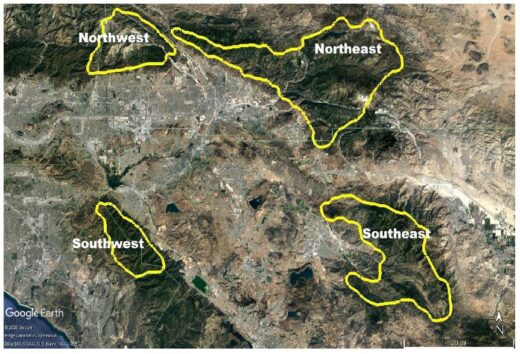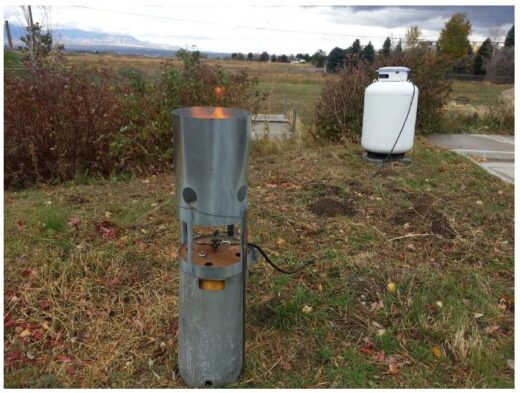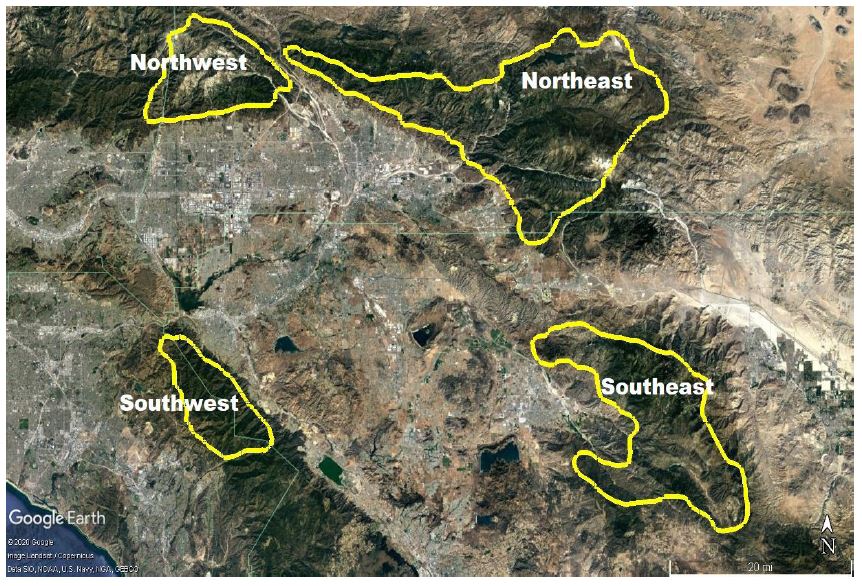Less rain, lack of precipitation, water shortage, drought and emergency are all familiar terms to Californians, especially in Southern California. The San Diego office of the National Weather Service reported that during the past water year, Idyllwild endured in eighth driest year since rainfall has been recorded.

PHOTO COURTESY OF NORTH AMERICA WEATHER CONSULTANT AND SANTA ANA WATERSHED PROJECT AUTHORITY
Last week, Gov. Gavin Newsom extended his drought emergency to all of California, including Riverside County, with the intent that water conservation will mitigate the drought effects.
Solutions and fixes are not guaranteed and often beyond human control. Another “La Niña” weather pattern is forecast for Southern California this winter. This will likely result in the second consecutive dry and warm winter. So, the arrival of an “El Niño” in a year or two may be some salvation. But be careful what you wish for. The end of the last drought period was February 2019, when enough rain fell toand flooded the Hill and washed out several roads.
Humans have tried several techniques that can control weather. But rain dances have not proven to be consistently successful. Weather modification, such as cloud seeding, has a scientific basis. It began in the mid-1900s.
Last year, the Santa Ana Watershed Project Authority announced it was going to explore a weather modification program to augment rainfall in Southern California.
The intent of a weather modification program being developed is to increase rain and snow fall, resulting in greater streamflow benefiting water consumers in Southern California. While weather modification has not been attempted in the Santa Ana Watershed, it has been used in Santa Barbara, San Luis Obispo and Sacramento, noted Jeff Mosher, SAWPA general manager.
“We want to make sure we have an adequate supply of water,” said Mark Norton, SAWPA Water Resources and Planning manager. “It’s not a drought buster.”
Cloud seeding is a chemical process intended to increase the amount of precipitation, including snow or rain, during the storm season. When a storm is approaching and over the target mountain range, silver iodide is fired. This process works through releasing particles of silver iodide into clouds, increasing moisture in the upper atmosphere.

PHOTO COURTESY OF NAWC AND SANTA ANA WATERSHED PROJECT AUTHORITY
This increases the chances of a cloud’s ability to produce rain or snow by providing a substance for the gaseous water molecules to adhere and to condense on. This aids in the forming snowflakes or raindrops.
SAWPA is a joint powers authority with five member agencies — Eastern Municipal Water District, Inland Empire Utilities Agency, Orange County Water District, San Bernardino Valley Municipal Water District and Western Municipal Water District.
In 2020, the authority began studying the economic and technical feasibility of a weather modification program. Study results were positive and the board hopes to initiate a pilot program in late 2022.
Earlier this year, SAWPA authorized its consultant to identify locations for equipment to seed the prospective rain clouds. This week it approved a contract to conduct an environmental assessment of its proposed pilot program.
The Southern California mountains are the target area for increasing precipitation. The San Jacinto Mountains are one of the four areas identified. The others include the San Bernardino, Santa Ana, and San Gabriel mountains. The higher elevations are more likely to produce more rainfall.
The focus also will be on winter storms, not summer rainfall, according to Garrett Cammons, of North American Weather Consultants of Utah, who performed the technical studies.
Based on the analysis of weather patterns, including dry years, cloud seeding would likely increase rainfall by 3.5% to 4.5%, the largest increase being in the San Jacinto Mountains.
The total resulting stream flow would likely increase by 8,200 acre feet (AF). The greatest projected percent increase was 13.7% and this was estimated to be in the San Jacinto watershed.
The annual cost is estimated to be slightly more than $200,000 or $25 per AF.
Based on the increases in stream flow estimated costs, Cammons calculated that the benefit-cost ratio is about 10 to 1 or $250 per AF.
As of the middle of October, however, none of the three local water districts have been contacted. SAWPA has not informed them of the possible program nor asked for any cost sharing.
“This is the first I’ve heard of it,” said Leo Havener, Idyllwild Water District general manager.
Norton also stressed that weather modification efforts would not be undertaken if NWS is predicting severe storm precipitation, flood or flash flood warnings affecting any target area.
The program planners also are aware of the potential for debris flow from burned areas. There would be a possibility of a long-term suspension of the program over forest fire areas. Cammons said that could possibly be “a single season or multiple seasons.”





